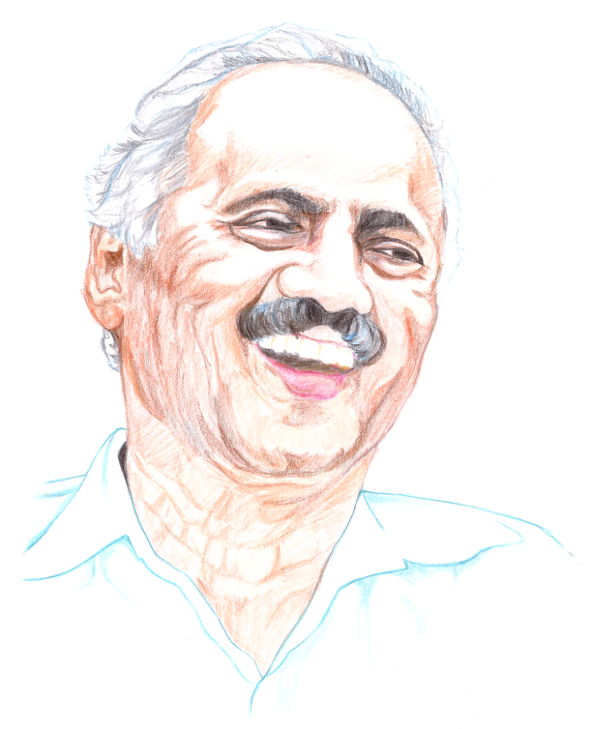
“The beginner should not be discouraged if he finds that he does not have the prerequisites for reading the prerequisites.”
paul halmos
Starting off in 1993 as an exercise to remedy the acutely felt shortage of trained students aspiring for advanced degrees in mathematics in India, MTTS, the Mathematics Training and Talent Search Programme, completed twenty five years in 2017. In these twenty-five years, MTTS has proved to be a beacon of light for students who find themselves at the crossroads of their careers during their undergraduate and early graduate student days–-helping them navigate those crucial years, channelize their talents and eventually crystallize their career decisions. In May 2017, Team Bhāvanā met up with the principal architects of this discernibly successful and trailblazing endeavour in Mysuru.
Sitting under the sheltering trees in the leafy environs of the Regional Institute of Education (RIE) at Mysuru, in May 2017 on the twenty-fifth edition of the MTTS programme, one cannot help but compare the tall, nurturing trees on campus with the man we are in conversation with. Acknowledging our wishes on the Silver Jubilee of MTTS, he breaks into a ready smile that belies the long, arduous path that he and his committed team have treaded since its genesis in the early 1990s. Age, all of 67, appears to be just a number to Professor Somaskandan Kumaresan–-“Kumaresan Sir”, to the eager and doting students milling around the RIE campus.
As a strict disciplinarian, Kumaresan keeps himself admirably fit with an unfailing daily regimen of walking and yoga. To an estimated 4,500 students and teachers across the length and breadth of our country, his name is synonymous with mathematics and its passionate pursuit, at both the pedagogical and the research level. As a student, Kumaresan’s love for mathematics took him to the Tata Institute of Fundamental Research (TIFR) in Mumbai, where he obtained his PhD in 1982 working under the tutelage of M.S. Narasimhan. Before that, he was the top ranker in his batch in both the Bachelor’s and the Master’s, which he obtained from Annamalai University, Tamil Nadu. Specializing in differential geometry and analysis, his research has appeared in top journals such as the Inventiones Mathematicae, Duke Mathematical Journal, etc. He was also a member of the coveted Institute for Advanced Study, Princeton, in 1982–83. However, all of these achievements sit lightly on him, as he remains affable and approachable to all who seek his help and guidance.
As we settle into the conversation, Kumaresan confides that the need for a better approach to pedagogy was felt strongly in mathematical circles when, year after year, selection committees saw poorly prepared and inadequately taught students appearing for interviews in institutes for higher learning. He knew then that he had to do something about this.
The Genesis
In 1992, a group of mathematicians led by Kumaresan decided to take matters to the next level. A concrete proposal was prepared, and the details of the plan, including its implementation, were presented to the National Board for Higher Mathematics (NBHM). M.S. Raghunathan, the then Chairman of the Board, saw not only the intrinsic merit in the proposal but also concurred with the idea that something urgent needed to be done to address the situation. Thus was born the MTTS programme. The NBHM has since then funded the programme, including spin-off programmes in teacher training. The programmes are fully free, residential, full-time and are held every year during summer breaks in various parts of the country. In addition to the main camp that lasts for a month, two mini camps of two weeks each are also held every year, adding to a total of sixty training days in all, spread across three centres in India. All expenses including travel, boarding, accommodation and educational supplies are borne by the NBHM. It takes a lot of planning, coordination and preparation done months in advance, so as to ensure its smooth running. Aiding Kumaresan in this endeavour are a trusted team of colleagues and co-workers who have jointly lent their shoulders to the yoke of this noble venture.
Every year a new place is chosen to host the programme. The choice is driven by an emphasis on reaching out to far-flung corners of India, and to draw from a pool of students as widely representative of the country as feasible. The goal is that nobody interested in mathematics, however far or remote they may be from the metros and the cities of India, should be denied a chance to pursue their passion. For the three levels put together–-O, 1 and 2, in the main camp–-about 150 to 160 students are chosen. They study real analysis, algebra, geometry, discrete mathematics/probability, and topology, depending on their levels.
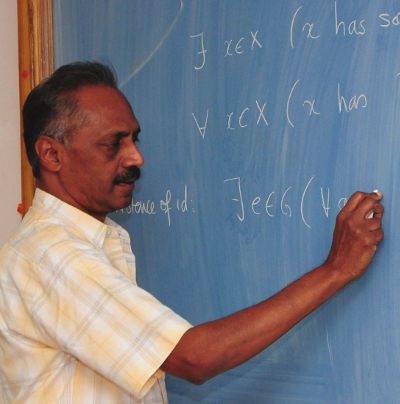
Kumaresan gets very animated when we quiz him about the pedagogy of the classroom sessions in MTTS. Words pour out, and one senses in his eyes the passion for his art. A remark he makes about the nature of mathematical ideas makes for compelling listening: “All the scientific subjects that students are exposed to–-be they physics, chemistry or even biology–-have a certain common quality to them. Each of these subjects have basic conjectures on why things behave the way they do. These basic conjectures give rise to qualitative and quantitative predictions. Such predictions can be verified via carefully designed experiments. Depending on the outcome of the experiments, conjectures go on to become accepted principles and laws, or, have to be corrected or even sometimes discarded, in order to conform to experimentally observed outcomes.
“Students find this logical approach very convincing and intellectually satisfying. Unfortunately, in mathematics, it is hard for students to discern this line of thinking. The canonical approach of conjecture \rightarrow prediction \rightarrow experiment \rightarrow falsification/confirmation, so successful in all other scientific disciplines, is sadly not available in mathematical pedagogy. Students do not see that there is a comparable logical chain of reasoning even in mathematics. This chain starts with conjecturing and leads to a concrete statement, which itself is either falsified with a counter-example, or accepted, but only via a valid proof–-just as it happens in its other scientific cousins. I found this lacuna very disappointing because talent itself is not in short supply in India. It simply was a case of employing the right pedagogical approach.”
Kumaresan and his team realised that the problem of pedagogy could not even be addressed, let alone solved, if teachers were left out of the process. The training programme for teachers, Pedagogical Training for Mathematics Teachers (PTMT), that is also conceived by Kumaresan, seeks to address the delivery side of the pedagogical process, thus closing the cycle from both ends.
And it quickly becomes clear that effective pedagogy ranks very high in his mind. “I have a fool-proof way of finding out whether students have learnt a concept or not,” he says. “I watch their eyes. Eyes never lie.” When Kumaresan says this, it is clear that wards under his watch in MTTS are in safe hands. Just as no two students are the same, no two teachers are the same. Yet, MTTS classrooms frequently surprise people when they learn that there are not just two, but up to four teachers in a single classroom. They can be seen walking around, watching from close quarters every correct step, or even catching a mistake and correcting it right there even as it happens. It is a process, parallels of which are hard to find elsewhere. Students entering the MTTS camp are first put through a basic evaluation procedure in order to gauge their maturity and level of prior learning. Once this is done, they are assigned various levels, and undergo different levels of teaching and classroom evaluation. MTTS does not believe in a final formal evaluation where people are awarded marks and given ranks.
M.S. Raghunathan’s words on this are especially illuminating. “I don’t particularly care whether a student has scored a hundred or has just about barely passed. To me, that fact in itself is not a measure of mathematical ability,” he says. “On the other hand, if I state a mathematical theorem or a fact to a student, and if his eyes light up, then that to me is mathematical talent.” This is a radically different approach to identifying and nurturing talent than the ones prevalent today in many of our universities. And luckily for many thousands of students across the country, over the past twenty five years, this approach has liberated them from the narrow and potentially defeating exercise which equates marks with talent. If one has aptitude, it can then be translated to creativity and discovery, with conscious effort and sincere practice. This is the bedrock of the MTTS approach.
Reminiscing about the early days of MTTS, Raghunathan, who was at that time the chair of the NBHM, says the following on the rather low level of preparation that typically characterized university students–-“Kumaresan differed from all the others before him, in that he had a concrete and an implementable plan of action that could address and correct this lacuna. Not only did he have a concrete plan, he was also busy putting together a team that could do the job. This job was tricky, because it had never been even attempted before. He presented a concrete proposal to the board, and when I saw it, it looked reasonable and I accepted it. I must say that apart from this, I have not been involved at all in either the pedagogical process, or the actual nitty gritty of its implementation.
“Until the mid-1990s, universities and research institutes were acutely aware of the ridiculously low levels of preparation of students who wanted to pursue research. We saw it ourselves year after year in TIFR, and it was bad. Then MTTS happened, and we felt that the programme was beginning to make a real positive impact at the level of mathematical understanding and competence of undergraduate students. This was clear when we interviewed MTTS alumni for research positions in PhD programmes. We saw that in a short duration, the trend was changing for the better, and that was the reason why the case to support it financially via funds from NBHM was strong. Kumaresan and his team were changing things for the better. Now in the present day of course, the reach and the scope needs to become even larger, because there are all these new institutes of higher learning like the new IITs, IISERs, coming up. In addition, it is important to firm up an assured support system that frees it from the vagaries of funding cycles. That is a big challenge that the MTTS team faces right now.”
The Team
An effort such as this, spread over twenty five years and involving many layers of planning, strategizing and execution, could not have been possible but for the extremely dedicated and competent set of friends and colleagues that Kumaresan has been able to put together, and who constitute a well-oiled, smoothly functioning unit. A man whom Kumaresan relies on heavily in this endeavour is a mathematician from IIT Kanpur, Gopalakrishnan Santhanam.
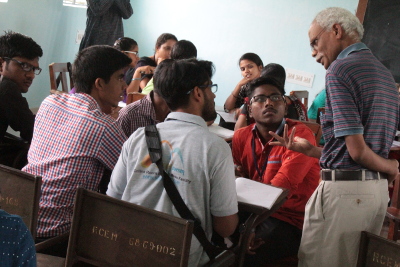
Santhanam gladly admits that his association with MTTS has been one of immense satisfaction. Seeing the programme complete twenty five years is something that he is both proud of, and greatly cherishes. Justifiably so too, when nearly 300 of the 4,500 students that the programme has touched have actually gone onto obtain PhDs in mathematics from some of the best places in India and abroad. But, the fact that places like Chhattisgarh, Jharkhand, and the North-East are yet to be fully integrated into the mathematical mainstream of the country is something that he is acutely aware of. Still, the burning optimism inside him is evident when he recalls an event that left him deeply impressed.
The particular incident happened in August 2014, when the MTTS team decided to hold a mini-camp in Srinagar, Jammu & Kashmir. Worried as they were about the safety of the students, what actually unfolded was an eye opener. The students came in droves, and participated with an enthusiasm that was both deeply touching as well as hugely inspiring. Young men and women of J&K had in one decisive fortnight proved that the difference between the reality on the ground and the standard narrative on Kashmir was stark, and as different as chalk from cheese. Santhanam declares that this response from the youth of J&K has only solidified their will to go there more often and reach out to more students who otherwise would remain lost to the world of mathematical knowledge.
The team has also experimented with the pedagogy over the years. Only the best and the most effective has been retained, and the rest jettisoned. In fact there is no dogma in MTTS when it comes to pedagogy. The primary goal is to put the joy of learning in the hearts of the students. Santhanam knows that the programme lasts only for a month, but he and his team have striven to ensure that its impact lasts a lifetime.
Joining the MTTS team during the mid-’90s when it was expanding its reach while continuously working on its internal processes, were A.J. Jayanthan, Bhaba Kumar Sarma, and B.S. Upadhyaya.
Jayanthan, a professor of mathematics at Goa University, makes this rather telling point on undergraduate education: “We in MTTS teach people the art of fishing. This is so much better than supplying them fish every day.” While reminding us that the university system in India has not failed completely, he adds that it has also not lived up to its full potential. For people like him, the point of concern is the following: If one intense month of pedagogy, such as the one in MTTS, had so much potential to bring about a vital change in the mindset of students, then why were students who stayed in the university system for a full three years in a bachelor’s programme still not getting excited enough to take up research or higher studies?
His own nephew, A.V. Jayanthan, a former student of Kumaresan, echoes the sentiment but from a student’s perspective. A.V. Jayanthan had joined the University of Mumbai (where Kumaresan was a faculty at the time) for his bachelor’s programme, and so was already quite familiar with Kumaresan’s style of teaching. It was only then that he heard about MTTS, and was quite desperate to attend. But, when he applied to the programme, his application was rejected. However, he persisted, and went and met Kumaresan in person, and told him that he was very keen to attend. In addition, he told Kumaresan that he would personally bear the expenses of the programme. Luckily, he was selected and he attended the programme that year. After the programme ended, he again went and asked Kumaresan on how he could pay for the expenses, to which Kumaresan just said “later”. Jayanthan kept asking him repeatedly, eager to keep his word on paying for his expenses himself, and each time he asked, all that he would hear was “later”.
That “later” never happened. He then joined IIT Bombay for a PhD in commutative algebra, and right now, he is in IIT Madras as a faculty member of the mathematics department. He says he now realizes that what Kumaresan wanted him to pay him back with was not in terms of money, but in terms of commitment and kinship with the very cause that MTTS stands for. Needless to say, Jayanthan is fully committed to MTTS and happy to shoulder the same responsibilities that Kumaresan has so admirably done, for so long, and for the benefit of thousands of students and teachers across the country. Jayanthan says with an unmistakable tone of gratefulness: “This is my time to pay back.”
In addition to creating a pool of talent that the country’s ever-growing educational sector can now readily tap into, what MTTS has also done is democratize mathematics education in India in its own way. It has levelled the playing field, and by taking quality education to remote parts of the country, it has attempted to negate the unfair advantage that students in metros and cities always enjoyed over their hinterland cousins.
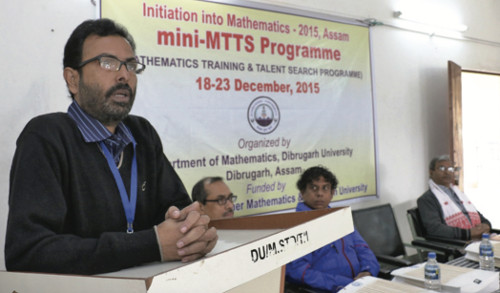
Bhaba K. Sarma, from IIT Guwahati, is another mathematician who joined the MTTS team in the mid-’90s, and has a heart-warming story on the North-East. He recalls a time in the ’90s, when Kumaresan visited Guwahati. Immediately, Kumaresan sensed that the North-East was being left out of the action, and wanted to start a programme in the then still fledgling IIT Guwahati. The first programme happened in 1998. The team later started doing smaller regional programmes solely focused on the North-East. It was especially satisfying for the team to see two very enthusiastically received mini MTTS programmes held in Aizawl in Mizoram, and in Dibrugarh in Assam, along with a PTMT programme in Dibrugarh.
Sarma recalls that at the end of the session in the mini MTTS held in Aizawl, the chief guest in attendance made an observation that stunned the audience. He remarked that until then it was always thought that Mizo brains were not capable of doing mathematics. But seeing the enthusiastic participation from the many young Mizo students who attended, learnt and enjoyed being part of the programme, he said that he was convinced that there was no truth in that statement, and that the myth surrounding Mizos’ inability to do mathematics had been busted, fully and convincingly. Sarma admits to feeling a deep sense of relief, happiness and satisfaction to see this otherwise remote part of the country participating, learning and competing with the rest of the country with a sense of joy, eagerness, and youthful energy.
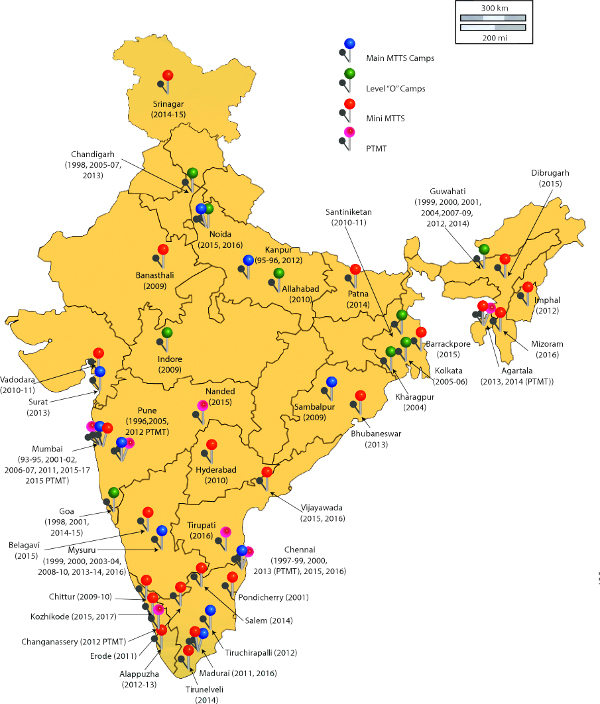
Credit: Ajit Kumar/MTTS
While focussing on the pedagogy is crucially important, Kumaresan understands that he is the general of an army of young and hungry foot soldiers. Without much ado, he says that problems related to food and catering are some of the major logistical challenges that the team faces year after year.
B.S. Upadhyaya, a retired professor of mathematics of RIE, Mysuru was in charge of local coordination at the 2017 camp held there, and shared his insights on the logistical and planning related challenges facing MTTS; and which sadly it can do precious little about: “The lack of uniformity in beginning and ending term dates across the country, and the resulting uncertainty in exam dates and declaration of results across the country, make it very difficult for us,” he says. “We are therefore unable to hold a single MTTS session where students from across the country can all aspire to participate in, without the fear of MTTS dates overlapping with their term/exam days.” Upadhyaya also shares key figures and numbers that are relevant for institutions planning to host an MTTS programme on their own campuses. He says that for an institution that wants to organize the full MTTS programme, it takes roughly four lakh rupees for a week, and this involves accommodation cost for nearly 150 students, their daily food expenses, and stationery. In addition, there are remuneration charges for the teachers in the programme.
Ananthnarayan Hariharan, a young assistant professor of mathematics from IIT Bombay, has a take on MTTS that dwells on certain aspects of the programme other than the pedagogical. He says that there is an aspect of MTTS that quickly becomes obvious to the participants, which is the cultural side of the programme. The rich and diverse nature of India, already quite evident in the composition and the fabric of an MTTS student community drawn from all parts of the country, presents its own dynamics. He talks about a very traditional South Indian student, for whom mornings are usually associated with waking up early, and “Pooja-Paath”, frequently finding himself sharing a room with his counterpart from, say, the northern parts of India. The northerner may wake up late, eat dinner at 12 in the night, go to bed late, and is very likely to differ from the boy from the South on many issues. Food, language, worldview and the very approach to life are all very likely to be different for these two fellow travellers, and yet the strong bond that ties the two is a common love for mathematics. Before the two have even realized it, the strange laws of human interaction have kicked in, and each is compelled or convinced enough to either reconcile with or accept the other’s viewpoint. The fact that there is no one “sacred” approach to life in general, is subtly yet strongly etched in the impressionable minds of the young participants. Hariharan says that this is a cultural byproduct of the MTTS exercise, and one which is as important to learn and imbibe as the principles of logic and reasoning.
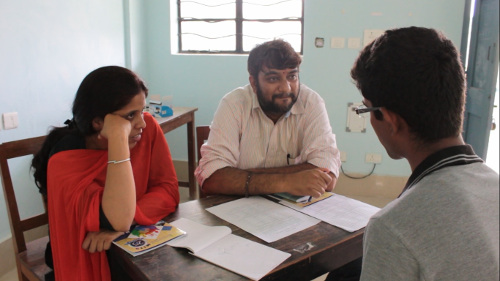
People like Ananthnarayan Hariharan are a crucial part of the MTTS ecosystem. Especially because they are now able to pass on to the next generation of students what they themselves picked up from MTTS, albeit as student participants of yesteryears. Sharing Hariharan’s perspective is Sweta Tiwari, an assistant professor from IIT Guwahati. Sweta, speaking to us in her native Hindi, says that she owes her very first participation in MTTS to one of her teachers in RIE, Bhopal where she was an undergraduate. She credits his mentorship and encouragement as the primary reason why she joined the MTTS programme. Not so surprisingly, the very first camp she attended spurred her on to pursue mathematics, and has been a hugely positive influence in her life. Tiwari shares that she is aware that there are many young people whom the programme has not been able to identify and nurture so far–-and thus may have forever been lost to the world of mathematics. She wants to ensure that no one eager to learn mathematics is ever left out either for lack of opportunities or mentoring, while pledging to be a part of the MTTS family for the next twenty five years.
It is also a matter of pride to the legacy of MTTS that a large percentage of its participants are women. MTTS alumnae have distinguished themselves in both research and teaching, and many of them even owe their very careers as practicing mathematicians to MTTS. Kaneenika Sinha, a young number theorist at IISER Pune, credits the programme for making her discover her passion for mathematics.1. Priya Asthana, another alumna, had a stint in investment banking before founding a company that seeks to make the learning of mathematics fun and enjoyable. Asthana seeks to ignite minds, convinced that once the mental fire is lit, it seeks and finds its own fuel. Sweta, Kaneenika and Priya typify the influence, the promise and the achievements of the programme.
The Pedagogy
MTTS and its hugely successful pedagogical approach is expectedly the subject of many conversations in the camp. Present on the occasion of the Silver Jubilee is an alumnus, Arindam Bose. Bose had always had a deep interest in mathematical education and pedagogy, and the MTTS programme helped him find his real calling. He went on to do a PhD in mathematics education from the Homi Bhabha Centre for Science Education (HBCSE), and is presently a faculty member at the Tata Institute of Social Sciences (TISS), Mumbai. The real charm for him in MTTS, expectedly, was its very unusual pedagogy. In addition, what struck him was that there was no evaluation at the end of the whole programme. He adds that participants quickly realize that the premium is on critical thinking and learning, as against scoring marks and topping the class.
This stress on critical thinking and logical reasoning has helped MTTS alumni immensely. And just for the record, not all alumni have gone on to pursue mathematics in their careers. Abhinav Verma is one such example of a person who benefitted from MTTS, and is now a researcher in an area that uses and applies mathematics. He is a researcher in Shell India, and deals with hydrocarbon fuels, exploring their physical and chemical properties. Having attended just one MTTS programme, Level O in 1998, he says that the impact that the programme created in his mind has been a major and pervasive influence in his career. His career itself progressed from one unexpected post to another; and each time he found himself at a crossroads, contemplating whether he would be able to manage the changes and the challenges ahead, he admits that he only had to dig into his MTTS experience. He proudly declares that he has always found reserves of strength and mental conviction, all thanks to just one Level O camp he was a participant of. Graduating in physics from University of Pune, Verma went to IIT Bombay to obtain a Master’s in Physics. For his PhD in Karlsruhe, Germany, he took up molecular biophysics and did a lot of computational modelling too. He has over the years studied protein folding, molecular dynamics, stochastic optimization and evolutionary algorithms during his PhD and postdoc days. Talking about his rather twisted yet successful career path, he credits the intense one-month MTTS programme that he attended for instilling in him the logical and analytical thinking ability that has since held him in good stead. If ever anyone was in doubt whether MTTS would be useful to people who are interested in subjects other than mathematics, he says that his own case should settle all such doubts forever.
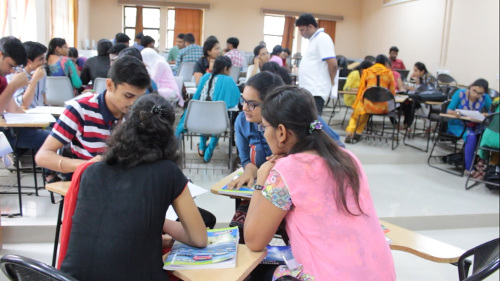
The MTTS programme has an unusual charm in that it naturally draws in people who are fearless experimenters. One such person is C.R. Pradeep. A trained mathematician with a PhD from IIT Bombay, and who later went on to become a professor of mathematics at IISc, Pradeep has now left the world of research to teach in Gubbi, a small town in Karnataka. He has taught mathematics to students of all age groups, starting from schools to university level. It is precisely the likes of Pradeep–-who have seen the best of academic cultures and research practices while working in places like IIT Bombay, TIFR and IISc–-who now have the best chance to identify and nurture raw mathematical talent hidden away in hinterland India. Talent which otherwise risks being lost forever.
Pradeep speaks passionately and with a fervour that is unmistakable. After all, it is not every day that one finds a tenured math professor from a top research institute like the IISc, giving it all up and moving into a semi-rural small town, just to do what he loves doing. When he speaks at length on the need to separate linguistic competency and flair from mathematical ability, one instantly empathizes with all those eager young minds, their heads buzzing with creativity and enthusiasm, but sadly held back by a system that places an unjustifiable premium on the English language. He is in fact a rebel in more ways than one. He insists on getting into a classroom and fearlessly making mistakes on the board, in full view of disbelieving student audiences, across age groups. For an audience of young students, the idea of a mathematics professor from a hallowed university tripping, faltering, but eventually finding his way out of a knotty mathematical argument would have been plain heresy. Almost unbelievable, if they were not themselves witness to his struggles at the board. He says that this is what he picked up from MTTS: the fearlessness to make a mistake in public, admit it, pick oneself up from there and go on to eventually understand that idea.
In just one such classroom session, Pradeep achieves a rare feat: he humanizes both mathematics and more importantly, its deified, otherworldly practitioners with mythical powers, the research mathematicians. It is an impression that strikes young minds like only the stab of cold realization can. To them, it instantly makes mathematics a plaything, a game where their own imagination and curiosity are the key players, with logic as an unfailing ally. If the professor can fail, I can fail too. If he can find his way out of this game, I too will. The dogma of failure as a taboo best avoided, is slayed right there in the class, in full public glare. Unfortunately, the struggles and the failures of the masters is the truth that university students, fed on a canon of polished lectures, are totally insulated from. Pradeep on the other hand insists on playing with ideas, and making them one’s companions–-perhaps being initially defeated by them, but eventually won over. He believes that when it is playtime, failure is an inevitable, yet only a temporary, way station on the route to understanding. Moreover, by teaching in both English and his mother tongue Kannada, he ensures that students do not let the English language get in the way of their learning.
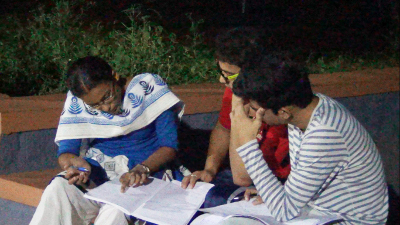
Nobody understands the limiting shackles of the English language better than R. Venkatesh does. His is the fable that MTTS alumni get familiar with very quickly. A story so unusual, that but for his actual physical presence in the camp, it could easily be dismissed as fictional. Born in a small town called Rasipuram in interior Tamil Nadu, Venkatesh studied in institutions where the medium of instruction was Tamil, right up to his BSc days. His first brush with MTTS happened in 2008, when he was pursuing his MSc at Bharathidasan University. It was to be a major inflection point in his life. He recalls that English was a huge barrier, but the encouragement that he received from the mentors there made a lasting impact in his life. It was also the launchpad that inspired him to take up mathematics at the research level. He qualified for the PhD programme at the Institute of Mathematical Sciences, Chennai, and went on to write up an award-winning thesis supervised by Sankaran Viswanath, himself a student of the Fields Medal–winning mathematician Richard Borcherds. More was to come. Working closely with leading mathematicians like Vyjayanthi Chari at the University of California at Riverside, and Maria Gorelik at the Weizmann Institute of Science in Israel, he already has impressive contributions to the body of mathematical knowledge called Lie Theory. In May 2017, IISc offered him a faculty position in its mathematics department, acknowledging his talent and work. From a young man who had not seen much outside his home state, and who was not fluent in anything other than Tamil, Venkatesh has gone on to do work of an exceptional quality.
Speaking about MTTS, Venkatesh admits that it widened his horizons, and thanks Kumaresan for the 2008 MTTS programme which made a big impact on him. His teacher P.S. Srinivasan at Bharathidasan University had been instrumental in sending him to MTTS, and Venkatesh is grateful to him. “Language is no barrier at all to the passionate student, and can be easily mastered,” he declares.
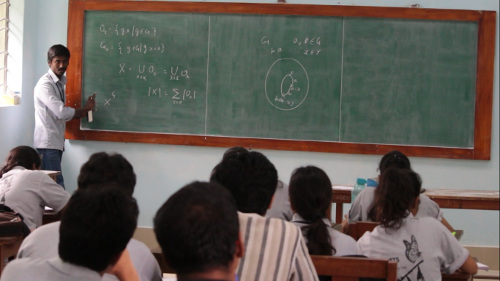
This is a sentiment that strongly resonates with a young student, Pournima Sisode, from Dhule, Maharashtra. Coming from an interior town, the only language she understood was Marathi. Landing up in Mysuru for the 2017 MTTS programme, having left the comforting environs of a loving joint family, she came in as a bundle of nervous energy and excitement. Her teacher in college had encouraged her to apply, and there she was. On the day of the registration, she was excited and determined to do well. She knew that there would be an early evaluation which measured her level of preparedness and prior learning, and she hoped to do well. But weighing heavily on her mind was the spectre of the English language. When the actual sessions started, her initial fears sadly only got accentuated. The novelty of an unfamiliar place was not the only challenge. The entire pedagogy was so different. No conventional teaching, no evaluation at the end, but a strong emphasis on questioning and inquiry. She, though, was definitely prepared to adapt and coast along with the rest of the class, if only she could latch on to one comforting idea or thought that she could comprehend. By the time the first day ended, she knew she was in trouble. Her roommates in the hostel were also trying to cope, but were at least not fazed by the English language.
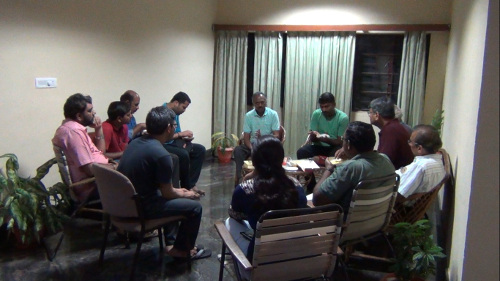
Over the next few days, she slipped into a state of further panic and despair. The classes were quickly getting beyond her pale. She could barely participate, and by the end of the first week, the combined novelty of an unfamiliar place, an unknown language, with the added pressure to perform well in class, finally broke her will. Teary-eyed and choking with emotion she wanted to quit. Her fond dreams of doing mathematics ending right there, all barely within a week of starting, was just too traumatic for the twenty-year-old.
Stories of such despair and disappointment are not new though to the MTTS legacy. The people who run it are more than acutely aware of such possibilities. Measures to alleviate and ease the inevitable pains of similar scholastic rites of passage are well in place, and in Pournima’s case, a tutor from Tamil Nadu, Nivethitha, spoke about her situation to the faculty, and Hariharan stepped in. Hailing from Nasik, his knowledge of Marathi turned out to be the emotional balm to soothe the young student’s insecurities. A quick evaluation in Marathi assured him that her ability to understand mathematical concepts was as good as anybody else’s in the camp. With that reassuring thought, he carefully and slowly started to work on her inner confidence, language and communication skills. After all, the ability to present one’s ideas in a clear and convincing manner is as important a component of what MTTS aspires to instil in its participants, as its primary focus on mathematical reasoning.
In two intensely demanding weeks the shy and reticent girl, who had come close to quitting MTTS and turning her back on mathematics, had begun to transform. With Hariharan’s genial, empathetic and thoughtful mentoring, the youngster was undergoing perhaps the most important metamorphosis of her life. Away from home for the very first time, amidst unfamiliar people who were fluent in a language that she could barely understand, let alone converse in, she was competing against not only her peers, but more importantly against her own imagined inadequacies. And all this while, she fought hard and tenaciously hung on to her love for mathematics.
The mentors, teachers and resource persons in MTTS understand this process extremely well. The slaying of the metaphorical internal demons is inevitable and necessary, and is done with intent and deliberation. Seminars that students present to their groups are one such deliberately planned component. Presenting their understanding to an audience that comprises both their peers and their teachers, it is a stage that is initially dreaded but in retrospect is fondly remembered. It is that forum where they shed their inhibitions and overcome their limitations.
In Pournima’s case, her presentation at the end of the session cleared not only her doubts about her own talents, but also assured her mentors that one more youngster had been won over to the world of mathematics.
For any programme, a mark of its success is the quality of its end products. In the case of MTTS, the end products happen to be the next generation of mathematicians. By this measure, Kumaresan can rest easy that the trigger that set off the whole thing in motion has finally begun to yield results. Two young mathematicians, both of whom are alumni of the programme, are now at a stage where they can pass on what they have learned and imbibed to the next generation. Venkateswaran (Venky) Krishnan and Ravisankar Sivaguru are colleagues at the Tata Institute of Fundamental Research–Centre for Applicable Mathematics (TIFR-CAM) in Bengaluru. Venky Krishnan says that, in his case, MTTS reinforced an idea that had already been playing in his mind about pursuing mathematics as a career. The premium that it laid on “doing” mathematics was the one that he most benefited from.
His colleague Sivaguru goes one step ahead. Contemplating a career in software or programming, Sivaguru recalls how he stumbled onto mathematics. As an undergraduate, a random inspection of the college bulletin board informed him about an upcoming MTTS programme, and out of sheer curiosity he applied. What happened next, he says, is that he went from being just another disinterested student of mathematics, to simply falling in love with the subject. He calls the MTTS experience both “transformative and decisive”. He went on to attend all the three levels, and realized that mathematics was his real calling in life. The importance of and the emphasis on “definitions” in mathematics, he says, is something he first appreciated only in his Level O camp. Also, in Sivaguru’s own words, “One concrete example does you a lot more good than all the fancy jargon in the world,” is another lesson that he picked up from MTTS. And he swears by it. It is a lesson that has stood him in good stead, right through his Master’s at IIT Madras, up to his PhD at Ohio State University, and even while he was a member of the elite Institute for Advanced Study, Princeton. Talking about his own peer group, and as a tribute to the legacy of Kumaresan, Sivaguru remarks that Kumaresan “has rescued an entire generation of mathematicians.” In his opinion, but for Kumaresan and MTTS, first of all there would not be a large body of trained mathematicians at all, such as the one available today in the country. Secondly, a large and eager population of students would not be lining up to study mathematics today. No words could surely be more satisfying to Kumaresan’s ears than these.
The Future–-Bright and Young
An obvious question that comes to anyone who has followed the evolution of the MTTS programme, is its future. It is inevitable that a new team of young leaders have to be mentored, empowered and transitioned to the roles that the senior members now play. Fortunately, that young brigade is already in place. Kumaresan’s own student, Ajit Kumar, is one among a larger team of younger colleagues, all eager to lend their shoulders to this noble cause.
Finally, behind every successful man stands a stronger woman. Mrs. Kalaiyarasi Kumaresan has always been the anchor around whom the Kumaresan family revolves. In an emotional address at the Silver Jubilee, she confided: “He is a hugely patriotic person. For him service to society and country come above everything else. Even though he had a very good job in a major university in the USA, he left it all to come back to India, just so that he could help contribute to the growth of a thriving mathematical culture here. Spending quality time with his family and children has been the biggest casualty because of his obsession with MTTS, but my children and I understand and have reconciled. Today, seeing the huge wave of affection, recognition and support from the people he has mentored and taught, makes all the sacrifices worthwhile. Also, but for his team and its commitment, he could not have succeeded.” She also concedes a fact very few people know about Kumaresan, admitting that despite his public persona, he is a very quiet and private person, and also deeply spiritual. She adds that she is convinced that for him, service rendered to the Indian student community is his own favoured approach to divinity.
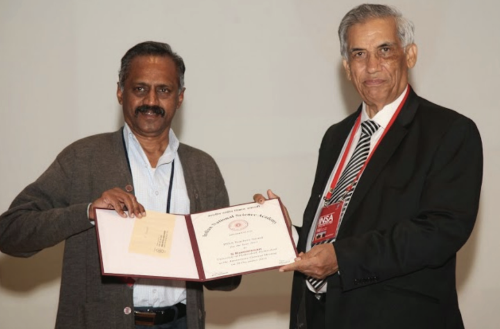
In a strangely karmic circle, MTTS, a beacon that has nurtured and guided thousands of students and teachers at the crossroads of their careers, finds itself at a crucial crossroad. With twenty five eventful years behind it, it looks up to the very minds it has lovingly nourished all these days to help it navigate the coming twenty five. In a beautifully symbiotic relationship of nurturing and strengthening, a beacon to many for twenty five years, now seeks its own.
As we prepare to bid our goodbyes to the MTTS team, a mosaic of thoughts crowd my mind. The flurry of new faces and young minds eagerly drinking from the streams of knowledge. The expectant faces of the parents and the guardians. The calming influence of the mentors. I realize that what Kumaresan has set in motion can only grow in reach and scale from now, what with its army of beneficiaries vouching for its quality and effectiveness. It has also stood the most stringent test of them all, the test of time. And perhaps underlying the deserving success of this special movement is this magic recipe that made all the difference:
I hear, I forget.
I see, I remember.
I do, I understand.

Footnotes
- A profile of Kaneenika Sinha appears in the following article: Nandita Jayaraj. 2018. “Kaneenika Navigates New India with Number Theories”. The Life of Science. ↩
